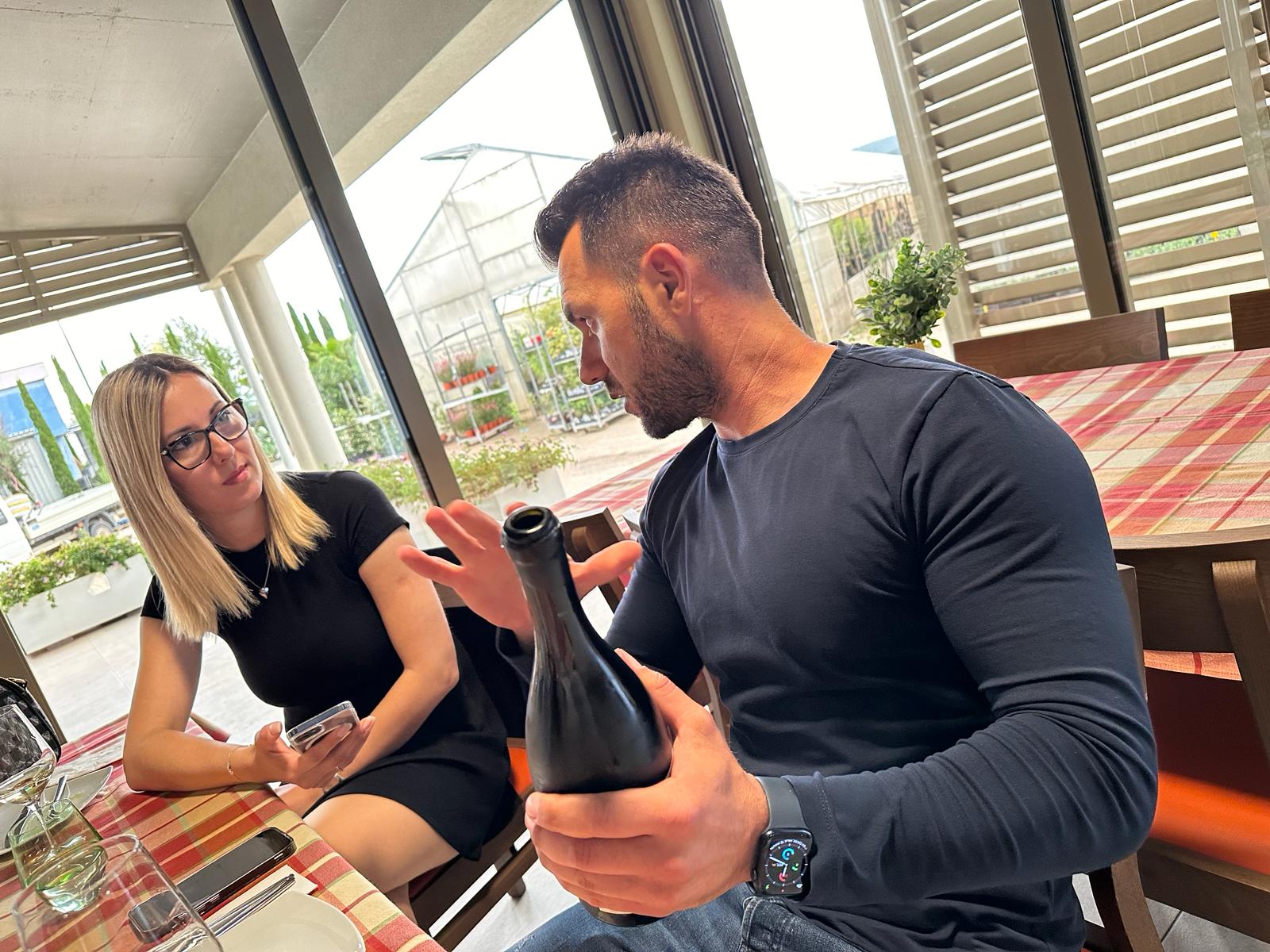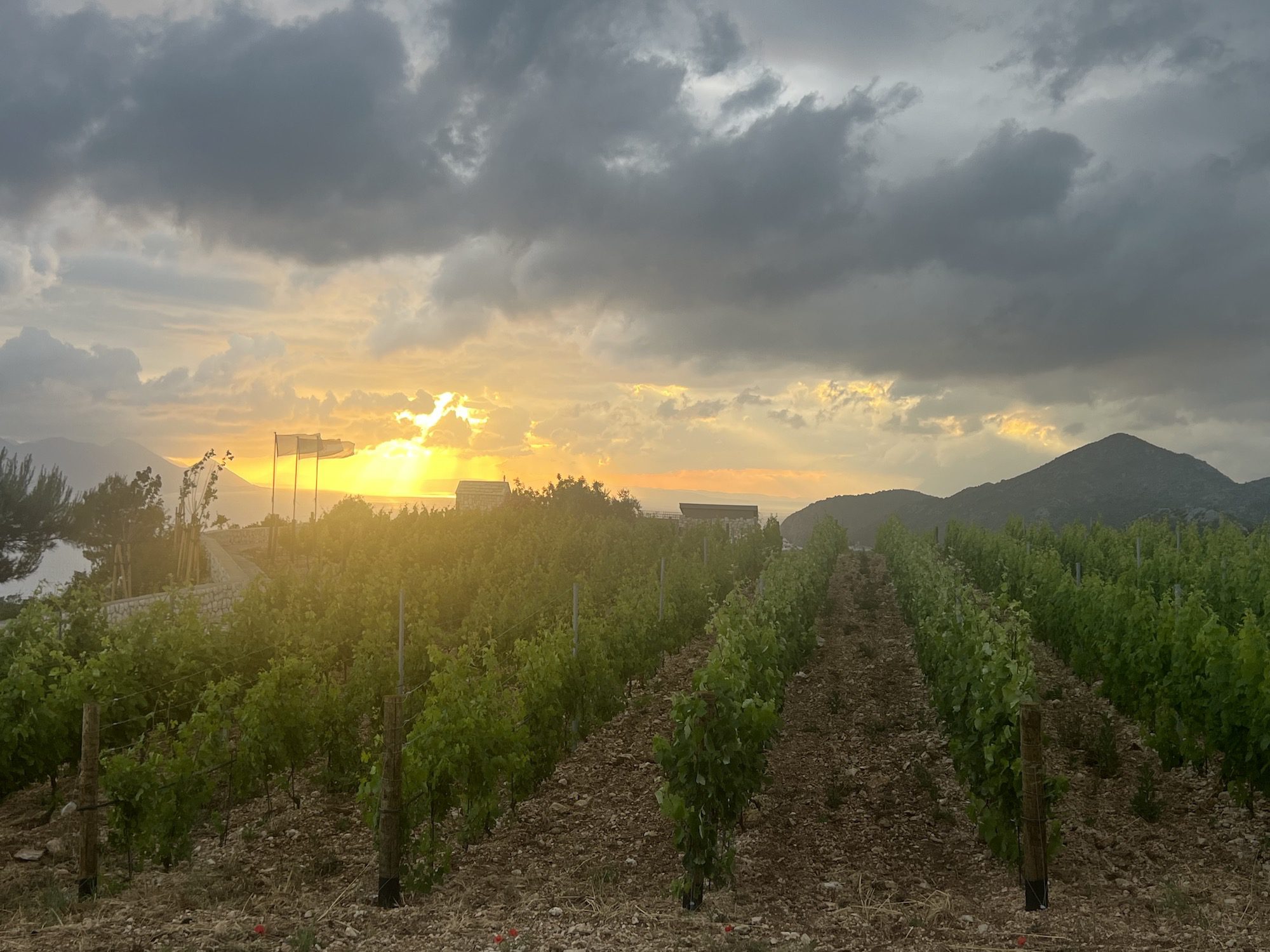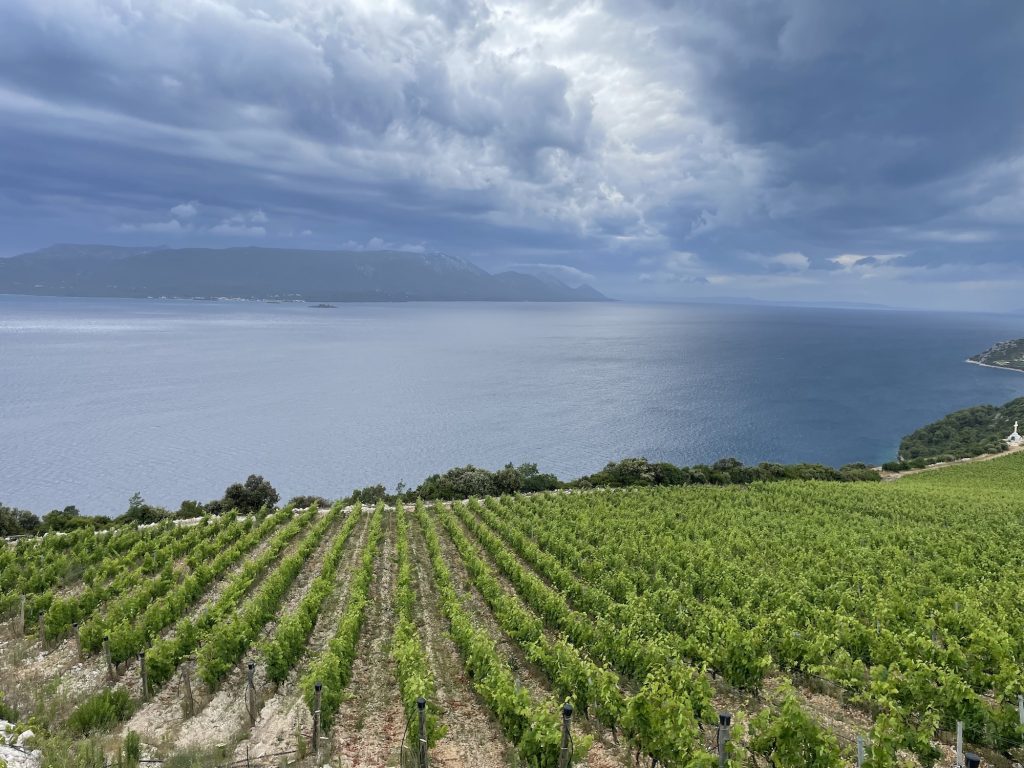Dijana Grgić reports from the sun- and sea-kissed, rocky region that represents a remarkable coming together of man and machine, and is the only exclusively organic growing area in Croatia.
Komarna is the youngest wine growing area in Croatia, located in an extremely rocky area, with a plethora of sunny days in the year. It was here, in the early 2000s, that machines ground down through the stone to a depth of 60 cm, so that the vines could be planted at all. The vineyard area covers a little more than 80 hectares, and the proximity of the sea and the wind provide ideal conditions for growing grapes, which are mostly indigenous varieties from Dalmatia, cultivated entirely organically.
The visits we made to the Volarević, Terra Madre and Rizman wineries were extremely interesting, and the views from the vineyards were striking. We tasted great wines, and our hosts told us their wine stories. First, we were greeted by Josip Volarević, one of the best winemakers in Croatia, who’s a big fan of Plavac Mali, which was the topic of his doctorate. Volarević Winery was founded in 2005, since when the father and three brothers have been involved in the business. Josip, the youngest brother, pays special attention to the terroir, because the creation of wine begins with the terroir, he declares. Annual production is around 100,000 bottles.
“At the very beginning, I realized that Plavac Mali is a really interesting variety, so I started researching it – an experiment I started in 2013,” said Josip Volarević. “Postponing the harvest by about two weeks seemed like a good decision. Maceration was a standard seven days, but we did an experiment with seven, 21 and 45 days. We had two harvests and in each of them three types of maceration in order to compare and get the best result. Regardless of the fact that we delayed the harvest, the best macerations were after 21 days in both harvests.”

It is not surprising that Volarević has one of the best examples of Plavac Mali, because they have devoted a lot of attention and research to it. Plavac Mali Volarević has high alcohol, but the wines are soft, fruity, very enjoyable and pleasant on the palate. This is the Plavac style that satisfies even the most demanding of wine lovers. The goal is to achieve that by delaying the harvest and the length of maceration, with the wine spending as little time as possible in wooden barrels, in order to retain as many characteristics of the terroir as possible.
In addition to the Plavac at this winery, their Malvasia from Dubrovnik, called ‘25 perpera’, also caught our attention. This is a beautifully balanced wine, with full body, precise aromas of white, citrus and tropical fruits, and is very mineral. In the Statute of the Republic of Dubrovnik from 1272, there’s a provision on the cultivation of vines and wine production, according to which the sale of wine at street markets was prohibited, and the penalty was 25 perpera, which was the largest coin. Hence, the inspiration for the name of the wine of this autochthonous variety.
Our next destination was the Terra Madre winery, and we actually stayed at the winery. Upon arrival, we were delighted with the view from the terrace, from where you can see about 30km out to sea, taking in the Pelješac Peninsula, the outlines of the islands of Brač and Hvar, and the steep slopes of the youngest and the only certified organic wine growing area in Croatia. The feeling is as if you’ve come to a surreal place, and also one where you can taste top quality wines. This winery offers tastings with cold cuts, and from the wines we tasted Pošip and rosé (Syrah and Plavac Mali) and Plavac Mali. Premium Pošip is a dry, quite fruity wine, with an emphasis on varietal aromatics and full flavours.
Terra Madre rosé is a fresh and light wine with fruity aromas. The nose is dominated by berries and some herbal notes. Plavac Mali barrique is a wine you shouldn’t miss out on when at the Terra Madre winery. A modern, medium-bodied wine with pronounced fruitiness, soft and restrained tannins. It’s ruby red, while the nose has a lot of ripe cherry and plum fruit.

Finally, we visited the Rizman winery, which, in addition to its great wines, also attracts people with its spectacular views of Pelješki bridge, the island of Hvar, the Adriatic Sea and small islands in the bay. Local and traditional delicacies are offered along with wine tasting, and the interior is stylishly decorated, so the overall impression is spectacular. The winery also has apartments, which provides guests with everything in one place. The Rizman winery has around 22 hectares of vineyards under organic cultivation, 90% of which are planted with the indigenous varieties of Plavac Mali, Pošip and Tribidrag (the same grape as Primitivo and Zinfandel).
Overall, Komarna is definitely a vineyard that will play an increasingly important role in Croatia in the future, and it’s already highly evident that the terroir and a focus on organic growing of indigenous varieties is yielding excellent results. I’d say in Komarna that man has utilized all the riches that nature has granted in the best possible way. If you’re in Croatia or planning a visit, I suggest putting Komarna at the very top of your destination list. You’ll enjoy top wines, great gastronomy and stunning views, and your hosts will do everything to make sure your stay here is an unforgettable experience.

